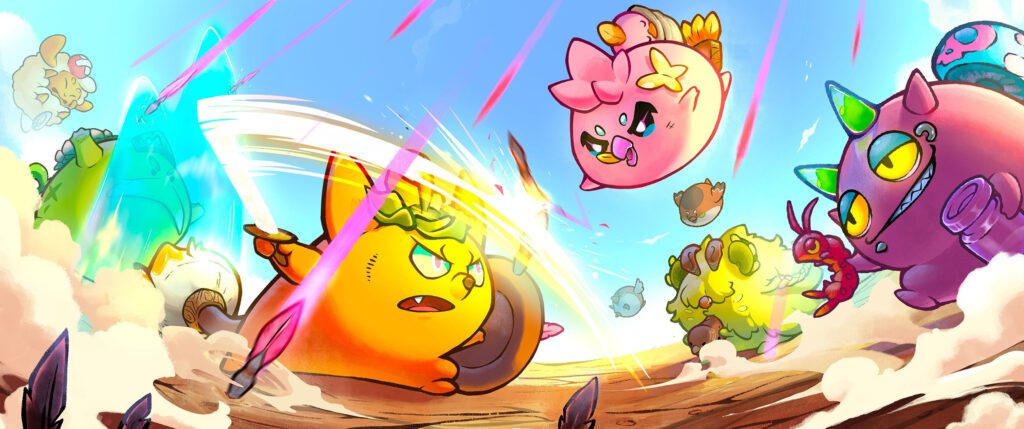The intersection of cryptocurrency and gaming has emerged as a transformative force in the realm of interactive finance, reshaping how players engage with digital assets and redefining the economic structures within gaming ecosystems. As blockchain technology continues to evolve, cryptocurrency game companies are pioneering innovative models that not only enhance user experience but also create new avenues for monetization and investment. This article delves into the mechanics of cryptocurrency in gaming, explores real-world examples, and analyzes the implications for the future of interactive finance.
The Rise of Cryptocurrency in Gaming
Cryptocurrency has gained significant traction since the inception of Bitcoin in 2009, with the market capitalization of cryptocurrencies surpassing $2 trillion in 2021 (CoinMarketCap, 2021). This growth has catalyzed the development of blockchain-based games, which leverage decentralized technologies to create unique economic systems. Unlike traditional games, where in-game assets are often locked within a centralized server, blockchain games allow players to truly own their assets through non-fungible tokens (NFTs) and cryptocurrencies.
Understanding Blockchain Technology
At the core of cryptocurrency gaming is blockchain technology, a decentralized ledger that records transactions across multiple computers. This ensures transparency, security, and immutability, making it an ideal foundation for gaming economies. Smart contracts, self-executing contracts with the terms of the agreement directly written into code, further enhance the functionality of blockchain games by automating processes such as asset transfers and game mechanics.
Real-World Examples of Cryptocurrency Game Companies
Several companies have successfully integrated cryptocurrency into their gaming platforms, demonstrating the potential of this innovative approach. One notable example is Axie Infinity, a blockchain-based game that allows players to collect, breed, and battle fantasy creatures called Axies. Launched in 2018 by Sky Mavis, Axie Infinity has become a leading player in the play-to-earn (P2E) model, where players can earn cryptocurrency by participating in the game. As of August 2021, Axie Infinity had generated over $1 billion in sales, with its native token, AXS, reaching a market cap of over $3 billion (CoinGecko, 2021).

Axie Infinity pioneered play-to-earn game models with blockchain technology.
Another prominent example is Decentrland, a virtual reality platform powered by the Ethereum blockchain. Users can purchase, develop, and sell parcels of virtual land using the platform’s native cryptocurrency, MANA. Decentraland has attracted significant attention from investors and brands alike, with virtual real estate sales exceeding $50 million in 2021 (DappRadar, 2021). This demonstrates the growing interest in virtual assets and the potential for cryptocurrency to revolutionize the gaming landscape.
The Play-to-Earn Model
The play-to-earn model has emerged as a significant trend within the cryptocurrency gaming sector. This model allows players to earn real-world value through their in-game activities, creating a new economic paradigm. Players can earn tokens by completing quests, winning battles, or trading assets, which can then be exchanged for fiat currency or other cryptocurrencies. This model not only incentivizes player engagement but also democratizes access to wealth generation within gaming.
For instance, the game “The Sandbox” allows players to create, own, and monetize their gaming experiences using the SAND token. The Sandbox has raised over $93 million in funding, highlighting investor confidence in the potential of P2E gaming (The Sandbox, 2021). Furthermore, the game has partnered with major brands such as Atari and Snoop Dogg, showcasing the mainstream appeal of cryptocurrency gaming.

Snoop Dogg increases the mainstream appeal of the P2E gaming model.
Economic Implications of Cryptocurrency Gaming
The integration of cryptocurrency into gaming has profound economic implications. Traditional gaming models often rely on microtransactions and subscription fees, which can limit player engagement and create barriers to entry. In contrast, cryptocurrency games offer a more inclusive economic model, where players can earn and trade assets freely. This shift has the potential to disrupt the traditional gaming industry, as players increasingly seek opportunities to monetize their time and skills.
Decentralized Finance (DeFi) and Gaming
The convergence of decentralized finance (DeFi) and gaming is another critical aspect of this evolving landscape. DeFi protocols enable players to lend, borrow, and stake their in-game assets, creating additional layers of financial interaction. For example, players in games like “Gods Unchained” can stake their cards to earn rewards, effectively turning their gaming assets into income-generating investments.
According to a report by DappRadar, the total value locked (TVL) in DeFi reached $100 billion in 2021, with a significant portion attributed to gaming-related projects (DappRadar, 2021). This illustrates the growing intersection between gaming and DeFi, as players seek to maximize the value of their digital assets.
Challenges and Considerations
Despite the promising potential of cryptocurrency gaming, several challenges must be addressed. Scalability remains a significant concern, as many blockchain networks struggle to handle the high transaction volumes associated with gaming. Ethereum, for instance, has faced congestion issues, leading to high gas fees that can deter players from participating in blockchain games.
Moreover, regulatory uncertainty poses a challenge for cryptocurrency game companies. As governments around the world grapple with how to regulate digital assets, companies must navigate a complex landscape to ensure compliance while fostering innovation. The recent crackdown on cryptocurrency exchanges in China serves as a reminder of the potential risks associated with operating in this space (Reuters, 2021).
Security Risks
Security is another critical consideration, as the decentralized nature of blockchain can expose players to risks such as hacking and fraud. High-profile incidents, such as the $600 million hack of Poly Network in 2021, underscore the importance of robust security measures in protecting players’ assets (The Verge, 2021). Game developers must prioritize security protocols to build trust within their communities and ensure the longevity of their platforms.
The Future of Cryptocurrency Gaming
As cryptocurrency game companies continue to innovate, the future of interactive finance looks promising. The potential for creating immersive experiences that blend gaming and finance is vast, with opportunities for new business models and revenue streams. The rise of virtual reality (VR) and augmented reality (AR) technologies further enhances the possibilities for engaging gameplay that incorporates cryptocurrency.
Moreover, as mainstream adoption of cryptocurrencies increases, more players are likely to enter the space, driving demand for blockchain-based games. According to a report by Newzoo, the global gaming market is expected to reach $218.7 billion by 2024, with a growing segment attributed to blockchain gaming (Newzoo, 2021). This growth presents a unique opportunity for game developers to capitalize on the convergence of gaming and finance.
In conclusion, cryptocurrency game companies are at the forefront of a revolution in interactive finance, transforming how players engage with digital assets and redefining the economic structures within gaming ecosystems. The rise of play-to-earn models, the integration of DeFi, and the potential for immersive experiences are reshaping the landscape of gaming. However, challenges such as scalability, regulatory uncertainty, and security risks must be addressed to ensure the sustainable growth of this sector. As the industry continues to evolve, the future of cryptocurrency gaming holds immense potential for innovation and economic empowerment.

